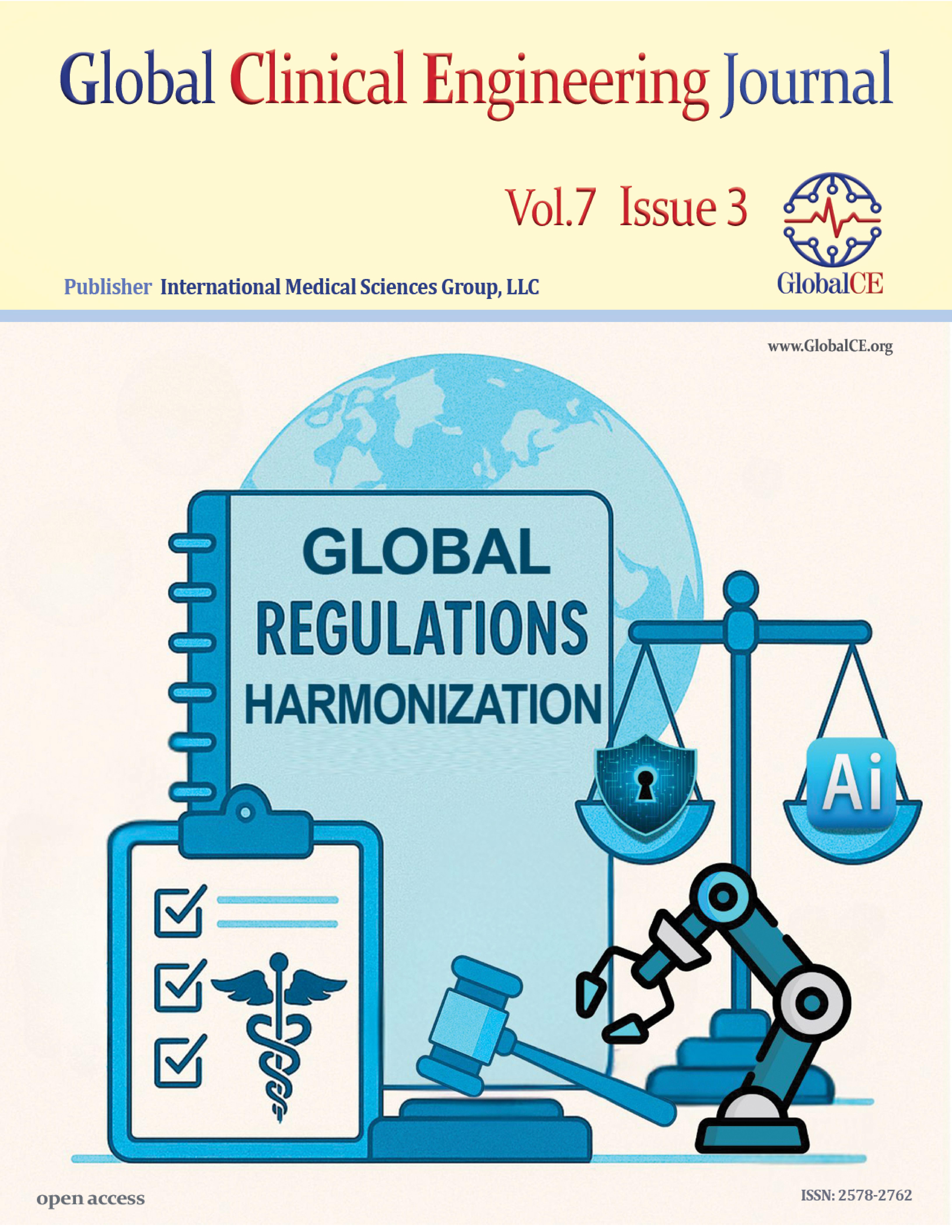Sustainable Procurement of Medical Technologies: Equipping 85 Modular Healthcare Systems in Argentina
Main Article Content
Keywords
Sustainable procurement, Medical devices, Modular hospitals, Public investment, Argentina, Results assessment, Project management, Medical device planning, Accessibility
Abstract
Context and objectives: This article presents the planning, construction, and equipping of 85 modular healthcare systems (MHS) in Argentina as a medium-term response to the pandemic emergency. The objective is to describe the implementation and analyze the results of this large-scale national project and its investment component for the acquisition of hospital equipment, highlighting the design, outcomes, and lessons learned in the process with a focus on long-term sustainability. Materials and methods: Nine different phases of the implementation process of the project are described and analyzed as components of the sustainable procurement methodology. Within the framework of the planning, construction, and commissioning of the NHS, data were collected and analyzed to qualitatively and quantitatively assess the experience of planning, designing, and procuring equipment for modular health centers. Data analysis was conducted by categorizing the acquired goods into active and passive medical devices (MD), furniture, support equipment, and installation equipment. Results: The analysis of the equipment acquired for the 85 MHS shows that the distribution of assets aligns with specific needs and follows similar patterns across all units. Among the 19,600 medical goods purchased, over 60% of the investment was allocated to MD, reaching 87% in centers with higher critical care activity. Visits to operating MHS confirmed their general functionality and user satisfaction with the infrastructure and equipment. Strengths identified include well-designed facilities and decentralized healthcare delivery, which has reduced the burden on central hospitals. At the same time, some lessons have been learned and risks identified, such as specific shortages of specialized personnel, minor quality issues with equipment reception, and the storage of some unused or little-used devices. The need for active post-delivery management was also observed as lessons learned for future large-scale operations. Discussion: It was highlighted that passive MD, mainly medical furniture, while accounting for 64% of the equipment, only represents 13% of the investment. However, their appropriate selection and maintenance are crucial for patient perception and quality of care. Furthermore, the high cost of medical technology was demonstrated by an analysis of investment per square meter. Conclusion: The implementation of this project focused on medical technologies, analyzing design, equipment investment, outcomes, and lessons for long-term sustainability. The high cost of medical technologies confirms the opportunity to evaluate not only the purchase price but also operational, maintenance, and disposal costs. A comprehensive approach to equipment planning and management is an essential requirement for sustainability and efficiency in LMICs. Evidence-based needs analysis, crucial for sustainable acquisition and to align the equipment with intended use, and post-implementation visits, crucial for continuous quality improvement, are recommended for the implementation of future projects. The presented lessons learned contribute to establishing a methodological base for future MD procurement projects.
Downloads
Abstract 386 | PDF Downloads 209
References
2. Smolova, M. and Smolova, D. Emergency architecture. Modular construction of healthcare facilities as a response to pandemic outbreak. E3S Web Conf. 2021;274:01013. https://doi.org/10.1051/e3sconf/202127401013.
3. A/RES/70/1 Transforming our world: The 2030 agenda for sustainable development. Available online: https://www.un.org/en/development/desa/population/migration/generalassembly/docs/globalcompact/A_RES_70_1_E.pdf.
4. Westland, J. The triple constraint in project management: Time, scope & cost. projectmanager, https://www.projectmanager.com/blog/triple-constraint-project-management-time-scope-cost.
5. Results of the 2022 National Population, Households and Housing Census—Official Website of the Argentine Republic. Available online: https://censo.gob.ar/index.php/datos_definitivos/.
6. ‘Urban Population in Argentina’—National Registry of Persons, Ministry of the Interior of Argentina. https://www.argentina.gob.ar/sites/default/files/poblacion_urbana_dnp.pptx_.pdf.
7. Di Virgilio, V., Bouchard, S.A., Becerra, P.F. Sustainable procurement of medical devices in an international context—Part 2. Glob Clin Eng J. 2023;6:18–28. https://doi.org/10.31354/globalce.v6i1.165.
8. UNOPS. Operational Instruction Ref. OI.IPMG.2025.07 Project Management. Available online: https://content.unops.org/documents/libraries/policies-2020/operational-directives-and-instructions/management-of-unops-partners-and-resulting-agreements/en/OI.IPMG-Project-Management.pdf.
9. Mohamad Salim, M.I., Ahmed Al-Ashwal, R.H., Tan T.S., et al. A review of medical device procurement at national level: Integrating support systems for clinical engineers towards efficient, transparent and standardized procurement processes. JMEDITEC. 2024;3:75–83. https://doi.org/10.11113/jmeditec.v3.61.
10. Di Pietro, L., Piaggio, D., Oronti, I., et al. A framework for assessing healthcare facilities in low-resource settings: Field studies in Benin and Uganda. J Med Biol Eng. 2020;40:526–534. https://doi.org/10.1007/s40846-020-00546-3.
11. Colombo, F. Boosting investment in health systems will be essential to deal with future shocks, says OECD. Available online: https://web-archive.oecd.org/temp/2023-02-23/651803-boosting-investment-in-health-systems-will-be-essential-to-deal-with-future-shocks.htm.
12. UNOPS. PROCUREMENT MANUAL. Available online: https://content.unops.org/service-Line-Documents/Procurement/UNOPS-Procurement-Manual-2021_EN.pdf.
13. Study Group 1 of the Global Harmonization Task Force. Definition of the terms ‘medical device’ and ‘in vitro diagnostic (IVD) medical device’. Available online: https://www.imdrf.org/sites/default/files/docs/ghtf/final/sg1/technical-docs/ghtf-sg1-n071-2012-definition-of-terms-120516.pdf.
14. Di Virgilio, V., Becerra, P.F., Bouchard, S.A. Sustainable procurement of medical devices in an international context—Part 3: Assessment of local and lifelong use conditions. Glob Clin Eng J. 2024;6:16–27. https://doi.org/10.31354/globalce.v6i2.168.
15. Makobore, P. Needs assessment in low-resource settings and the role of biomedical engineers. Available online: https://www.grupponazionalebioingegneria.it/gnblecture/needs-assessment-in-low-resources-settings-and-the-role-of-biomedical-engineers/.
16. Tarafdar, M.A. Patients’ perceptions of quality in healthcare: A review. ZHSWMCJ. 2024;6:36–39. https://doi.org/10.47648/zhswmcj.2024.v0601.07.
17. LaVela, S.L., Etingen, B., Hill, J.N., et al. Patient perceptions of the environment of care in which their healthcare is delivered. HERD. 2016;9:31–46. https://doi.org/10.1177/1937586715610577.
18. Torain, M.J., Bennett, G.G., Matsouaka, R.A., et al. The patient’s point of view: Characterizing patient-level factors associated with perceptions of health care. Health Equity. 2021;5:457–465. https://doi.org/10.1089/heq.2021.0062.
19. Bronzino, J.D. The Biomedical Engineering HandBook, Second Edition. International Standard Book Number 0-8493-0461-X. Available online: https://biblioseb.wordpress.com/wp-content/uploads/2018/03/biomedical-engineering-handbook-j-d-bronzino.pdf.
20. Virtual Course on Healthcare Technology Planning and Management. Pan American Health Organization. Available online: https://campus.paho.org/en/course/healthcare-technology-planning-management-2019.
21. David, Y. and Jahnke, E.G. Planning medical technology management in a hospital. Glob Clin Eng J. 2018;23–32. https://doi.org/10.31354/globalce.v0i1.23.
22. Diaconu, K., Chen, YF., Cummins, C. et al. Methods for medical device and equipment procurement and prioritization within low- and middle-income countries: Findings of a systematic literature review. Glob. Health. 2017;13:59. https://doi.org/10.1186/s12992-017-0280-2.






